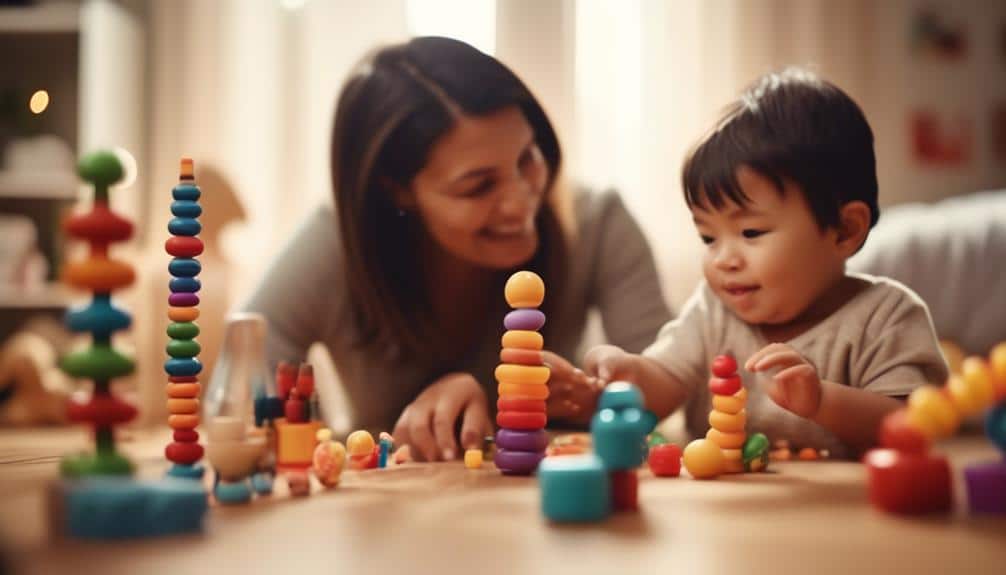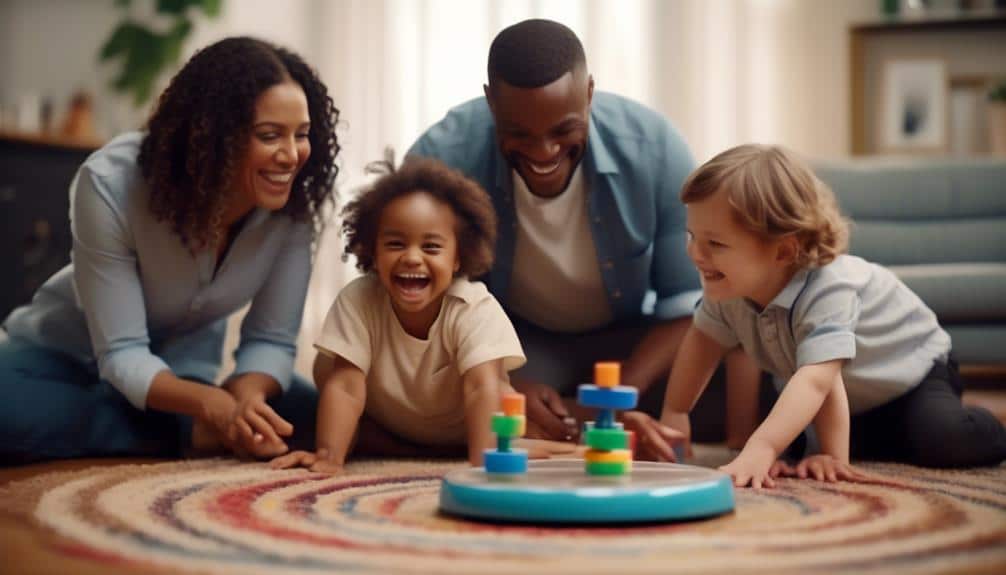As we explore the landscape of developmental therapies for children, particularly those with autism spectrum disorder (ASD), DIRFloortime therapy emerges as a beacon of hope for many families. This relationship-based therapy, formally known as DIRFloortime, encourages parents to engage with their children at their level, building upon natural, playful interactions. Its foundational premise is that by meeting children in their own emotional and cognitive world, caregivers can promote meaningful connections and growth in social, emotional, and intellectual capacities. As anecdotal and empirical evidence mounts in favor of Floortime’s efficacy, examining the reasons behind its celebrated status among parents is imperative.
While the therapy’s personalized approach and accessibility contribute to its reputation, there are intricate layers and outcomes associated with Floortime that warrant a closer investigation. The question then arises: what specific aspects of Floortime therapy resonate so profoundly with families, and how do these experiences contribute to the therapy’s perceived success?
Key Takeaways
- Floortime therapy is a relationship-based approach for children with autism spectrum disorder (ASD) that focuses on nurturing communicative and emotional growth through dynamic play interactions.
- The therapy is grounded in the Developmental, Individual-difference, Relationship-based (DIR) model and involves engaging with children at their level on the floor.
- Parental involvement in treatment enhances the therapeutic process, fosters a deeper bond between the child and caregiver, and recognizes parents as primary agents of change.
- Floortime therapy prioritizes emotional and relational development, adapts interventions to each child’s unique abilities and challenges, and promotes self-regulation, communication expansion, and enhanced connections.
Understanding Floortime Therapy
Floortime therapy, a nuanced and relationship-oriented approach, nurtures a child’s communicative and emotional growth through responsive and dynamic play interactions. Grounded in the Developmental, Individual-difference, Relationship-based (DIR) model, this therapeutic method fosters developmental progress by embracing each child’s unique rhythms and preferences. Within the security of a tranquil setting, therapists or family members engage with children at their level—literally joining them on the floor—facilitating a tailored environment where social-emotional development can flourish.
By prioritizing milestones such as self-regulation, intimacy, and emotional thinking, the Floortime approach creates a scaffold upon which children can expand their circles of communication. This affirmative method involves caregivers in sessions extending from two to five hours daily, emphasizing a shared journey in the child’s world.
Professionals such as child psychologists, special education teachers, speech therapists, and occupational therapists, who are steeped in the empathetic ethos of the Floortime model, administer this therapy. Though empirical studies on Floortime’s efficacy, particularly for Autism Spectrum Disorder (ASD), suggest a need for more robust, standardized research, the approach resonates with many due to its person-centered, play-based foundation.
Core Principles of DIRFloortime

DIRFloortime is a therapeutic approach that prioritizes personalized interaction strategies, acknowledging the unique developmental trajectory of each child. It nurtures emotional growth at its core, facilitating a deeper understanding and responsiveness to the child’s feelings and emotional landscape. Emphasizing emotional development is integral to fostering meaningful connections and advancing social and communicative competencies.
Individualized Interaction Approaches
Harnessing a child’s intrinsic interests and individualized Interaction Approaches, as central tenets of DIRFloortime therapy, adeptly fosters crucial developmental milestones in communication, emotional growth, and cognitive processing in a manner that respects the unique developmental trajectory of each child. Following the Greenspan model’s developmental approach, therapists embrace individual differences, crafting sessions that incorporate:
- Personalized engagement using the child’s passions and interests.
- Inclusion of sensory, emotional, and motor experiences to enhance connection.
- I am nurturing circles of communication to advance interaction and symbolic thinking.
- A non-directive stance encourages the child to take the lead.
This empathetic and clinical method evidences significant developmental gains, particularly in children with autism, by prioritizing the emotional and interpersonal over the rigidly instructional.
Emotional Development Focus
Centered around the child’s emotional and psychological well-being, the Emotional Development Focus within DIRFloortime therapy utilizes a child’s natural curiosities and affinities as a foundation for cultivating essential engagement and communication skills. This empathetic approach aligns with the innate desire to nurture and support the developmental journey of a child with autism. DIRFloortime facilitates a more profound and meaningful interaction that resonates with the child’s unique way of experiencing the world by prioritizing emotional connection.
| Key Element | Description | Impact on Child with Autism |
|---|---|---|
| Interests | Utilizes personal passions to engage | Enhances motivation to interact |
| Emotional Connection | Encourages child-led activities for bonding | Fosters trust and security |
| Patience & Imagination | Requires parental adaptability and creativity | Supports genuine self-expression |
Through these core principles, DIRFloortime fosters a therapeutic environment conducive to the child’s holistic emotional development.
Recognizing Developmental Milestones

In Floortime therapy, recognizing developmental milestones is crucial, as it allows both therapists and parents to track a child’s progress in areas such as emotional regulation, interactive communication, and complex thinking. A child’s developmental level is a crucial indicator of the therapy’s effectiveness, guiding interventions tailored to the child’s unique needs and abilities.
Floortime therapy emphasizes several specific milestones:
- Self-Regulation: The ability of young children to manage their emotions and behavior is a foundational milestone. It reflects their growing capacity for emotional regulation.
- Two-Way Communication: Essential for social development, this milestone pertains to the child’s ability to engage in back-and-forth interactions, signaling an advancement in interactive communication.
- Emotional Thinking: The development of emotional thinking is signified by a child’s ability to express and understand feelings, which is central to Floortime’s goals.
- Pretend Play: An essential aspect of cognitive and social development, pretend play indicates a child’s ability to use imagination and creativity, demonstrating complex thinking.
Recognizing and supporting these milestones empower young children to reach their full potential. Floortime’s individualized approach fosters growth, understanding, and profound developmental progress.
Floortime’s Therapeutic Techniques

Building upon recognizing developmental milestones, Floortime’s therapeutic techniques involve dynamic interactions tailored to each child’s unique developmental level and individual differences. The essence of DIR/Floortime is to meet children where they are and build upon their strengths, fostering natural developmental progressions. Central to this approach is the emphasis on emotional functioning, recognizing the intrinsic link between emotions and learning.
| Aspect of Floortime | Description |
|---|---|
| Engagement | Encouraging mutual attention and intimacy. |
| Two-Way Communication | Fostering back-and-forth interactions. |
| Shared Problem Solving | Building the ability to think and play creatively. |
| Emotional Ideas | Expanding communication to include feelings. |
These therapeutic techniques are implemented in a warm and empathetic manner, enabling parents and therapists to serve as guides in the child’s exploratory journey. By entering the child’s world and following their lead, practitioners of Floortime harness the power of human connection to facilitate healthy development. The objective is to teach specific skills, enhance overall developmental capacities, and improve emotional functioning, paving the way for children to reach their fullest potential.
Parental Involvement in Treatment
How does parental involvement in Floortime therapy enhance the therapeutic process for children with developmental challenges? Engaging parents directly in the treatment fosters a deeper bond between child and caregiver and provides a consistent and comforting presence integral to the child’s development. The DIR/Floortime model emphasizes the role of parents as primary agents of change, recognizing that their intimate understanding of their child’s unique cues and preferences is invaluable.
Parental involvement in treatment offers several benefits:
- Emotional Security: A parent’s presence can help the child maintain safety, allowing them to explore and engage more freely during therapeutic activities.
- Daily Continuity: Parents who incorporate DIR/Floortime principles into daily routines ensure a seamless continuation of therapeutic strategies, which can lead to more significant progress.
- Personalized Adaptation: Parents can tailor interactions to align with their child’s interests and developmental level, enhancing motivation and learning.
- Immediate Reinforcement: Real-time responses from parents to their children’s communicative attempts reinforce desired behaviors and foster skill acquisition.
For children with autism spectrum conditions, such personalized and empathetic involvement is paramount in supporting their growth and fostering their social, emotional, and cognitive skills.
Case Studies: Transformative Outcomes

In exploring the impact of Floortime therapy, we turn our attention to individual case studies that reflect transformative outcomes. These narratives highlight personal growth stories and therapeutic breakthroughs and share milestone achievements that mark significant progress in a child’s developmental journey. Through these documented experiences, we gain insight into the potential of Floortime therapy to foster meaningful change in the lives of children with autism.
Personal Growth Stories
Through the lens of Floortime therapy, personal growth stories emerge, illuminating the profound developmental strides made by children with autism as they navigate their social and emotional landscapes. These narratives, grounded in the Greenspan model, reflect the core principles of the DIR/Floortime approach, which fosters individual progress by leveraging a child’s interests.
- Enhanced Communication: Children receiving DIR/Floortime exhibit marked expressive and receptive language improvements.
- Emotional Development: Personal growth stories often include children achieving new emotional self-regulation and empathy milestones.
- Social Interaction: Parents report significant gains in their child’s ability to form meaningful social connections.
- Engagement and Well-being: Case studies underscore the positive influence of Floortime on children’s active engagement and overall mental health.
These case studies serve as beacons of hope, demonstrating the transformative power of personalized, relationship-based therapy.
Therapeutic Breakthroughs Highlighted
Reflecting on these personal growth stories, we now focus on specific therapeutic breakthroughs as evidenced by case studies documenting transformative outcomes in children with autism engaged in Floortime therapy. The Greenspan model, DIR/Floortime, centers on fostering critical developmental milestones. These milestones—ranging from self-regulation and intimacy to complex communication—are essential for children with autism spectrum disorders (ASD). Therapists and parents have observed significant advancements in the child’s capacity for two-way communication and emotional thought through the empathetic and collaborative approach of joining a child in their world. Such therapeutic breakthroughs highlighted in these case studies demonstrate the efficacy of DIR/Floortime and underscore the need for ongoing, comprehensive research to validate further and refine this person-centered therapy.
Milestone Achievements Shared
Case studies of children with autism spectrum disorders engaging in Floortime therapy reveal significant milestone achievements, including enhanced self-regulation and improved two-way communication. At the core of DIR/Floortime, the Greenspan model emphasizes the importance of emotional and intellectual growth through relationship-based interactions. These milestone achievements in children with autism are pivotal in their developmental trajectory and are celebrated by both therapists and parents:
- It improved the initiation and maintenance of eye contact, signaling increased engagement.
- Expansion of expressive language, allowing for more intricate and meaningful exchanges.
- Emergence of imaginative play, reflecting a leap in creative thought processes.
- Enhanced emotional reciprocity, fostering deeper connections with others.
These transformative outcomes are a testament to the potential impact of the DIR/Floortime approach in nurturing the development of children with autism.
Addressing Emotional & Relational Growth

Floortime therapy prioritizes nurturing the emotional and relational development of children with autism by engaging them in interactive play that fosters meaningful connections and understanding. This Greenspan model of emotional therapy is grounded in the Developmental Individual-difference Relationship-based model (DIR), which underscores the importance of adapting interventions to each child’s unique abilities and challenges.
Implementers of the therapy, whether they are child psychologists or parents, are trained to interact with the child in a manner that promotes self-regulation and expansion of communication. The approach is hands-on and tailored, allowing for a dynamic exchange between the child and the therapist or parent.
| Aspect of Floortime Therapy | Goal | Implementation Strategy |
|---|---|---|
| Emotional Growth | Foster emotional self-awareness and expression | Engage in play that resonates with the child’s interests |
| Relational Development | Enhance connections with others | Encourage back-and-forth interactions and joint attention |
| Self-regulation | Improve the ability to cope with sensory and emotional stimuli | Support the child through challenging moments of play |
| Communication Expansion | Broaden the circles of communication | Introduce new play themes and scaffold complex interactions |
The professional community recognizes the need for more rigorous research to establish Floortime’s efficacy fully. However, the therapy’s individualized nature and emphasis on emotional and relational milestones remain compelling for parents and practitioners alike.
Integrating Floortime Into Daily Routines

Successfully incorporating Floortime into daily routines involves setting aside specific interactive and sensory play times that align with the child’s natural interests and inclinations. By creating a supportive environment attuned to the child’s sensory preferences, caregivers can facilitate a more organic and enjoyable engagement that nurtures the child’s development. These activities must promote joy, comfort, and flexible thinking, allowing the child to experience the intrinsic motivation central to Floortime’s therapeutic approach.
Daily Routine Integration
Integrating the principles of Floortime therapy into daily activities such as meals, play, and bedtime routines can significantly enhance the parent-child relationship while encouraging the child’s developmental milestones. Daily routine integration is rooted in the DIR/Floortime model, which fosters emotional and intellectual growth through responsive and respectful interactions.
- Follow the child’s lead: Incorporate the child’s interests into daily tasks to promote engagement and joy in learning.
- Meaningful interactions: Use everyday moments to connect and communicate, strengthening the emotional bond.
- Sensory and regulatory support: Address sensory processing needs naturally within the context of daily activities.
- Flexibility and problem-solving: Encourage these skills by adapting routines to the child’s cues and responses.
This approach respects the child’s unique developmental profile and nurtures their differences in a comforting, familiar setting.
Seamless Activity Incorporation
Parents seeking to enhance their child’s developmental journey can weave the principles of Floortime into the fabric of daily routines, creating a tapestry of meaningful interactions and learning opportunities. This seamless activity incorporation respects the child’s interests and integrates DIR/Floortime strategies throughout the day.
| Routine Activity | Floortime Integration |
|---|---|
| Mealtime | Engage in pretend play with food items, following the child’s lead. |
| Bathtime | Use bath toys to create stories, fostering imaginative dialogue. |
| Playtime | Encourage creativity through child-directed play scenarios. |
| Bedtime | Share a calming book focusing on the child’s emotional cues. |
Comparing Floortime With Other Therapies

Typically, when evaluating therapeutic options for children with autism, Floortime therapy emerges as a distinct approach, particularly when contrasted with the structured methodologies of Applied Behavior Analysis (ABA). The Greenspan model, or DIR/Floortime, emphasizes the child’s naturalistic interactions, aligning with their developmental level and individual differences to foster learning and growth.
- Greenspan’s model centers on emotional and relational development, recognizing the importance of these factors in the child’s overall growth.
- DIR/Floortime: Encourages children to lead in play, allowing their interests to guide therapeutic activities and interactions.
- Applied Behavior Analysis: Focuses on discrete trials and structured learning environments to modify behaviors through reinforcement.
- Developmental and learning outcomes: While substantial research supports ABA, Floortime requires further empirical study to establish its efficacy in standardized developmental and language measures.
Professionals and families dedicated to serving children with autism must weigh the benefits and limitations of each therapeutic approach. Floortime’s child-centric, emotionally supportive methodology contrasts the more prescriptive nature of ABA, although the latter has a more incredible evidence base. Therapy decisions should be individualized, considering each child’s unique needs and potential.
Professional Endorsements & Critiques

Numerous professionals in child psychiatry and developmental therapy have offered their endorsements of the Floortime approach while also acknowledging the critiques regarding its need for more rigorous empirical support. The DIR/Floortime model, formulated by Stanley Greenspan, M.D. and Serena Wieder, Ph.D., has been lauded for its personalized and relationship-based therapy framework. Professionals such as child psychologists, special education teachers, speech therapists, and occupational therapists have integrated the Greenspan model into their practices, often witnessing positive developmental strides in children with autism spectrum disorders (ASD).
However, the professional endorsements & critiques are not without contention. Some researchers highlight the limited research and mixed results concerning Floortime’s efficacy, pointing to an absence of objective evidence and standardized developmental measures. There is a call within the clinical community for more objective procedures and replication of results to solidify Floortime’s standing as an evidence-based practice.
Despite these critiques, it is essential to note that when Floortime is used in conjunction with behavioral treatments, research has indicated significant developmental gains for children with ASD. This integrative approach aligns with the empathetic, individual-focused ethos of therapeutic professionals striving for comprehensive care. The current discourse underscores the need for continued research to enhance the credibility and effectiveness of Floortime therapy.
Accessing and Affording Floortime Services

Navigating the financial landscape of Floortime therapy can be a complex process, requiring families to explore various avenues for financial assistance and insurance coverage to ensure their child receives the necessary interventions. The Greenspan model, also known as DIR/Floortime, is a respected approach for children with autism spectrum disorders (ASD) and other developmental challenges. However, the cost can be a barrier for many families.
To make DIR/Floortime more accessible, consider the following options:
- Financial Assistance: Research programs offering scholarships or grants for families seeking Floortime therapy.
- Insurance Coverage: Confirm whether your health insurance plan includes provisions for the Greenspan model and understand the criteria for coverage.
- Sliding Scale Fees: Approach Floortime providers to discuss fees adjusted to your income level, allowing equitable access to services.
- Community Resources: Tap into local organizations and support groups that may have funds allocated for assisting families ineedingFloortime therapy.
When discussing payment with providers, it’s also beneficial to inquire about flexible payment options to ease the financial strain. While affordability is a significant concern, the dedication to finding workable solutions reflects a collective commitment to serving the developmental needs of children with ASD and similar conditions.
Frequently Asked Questions
Is DIRFloortime Therapy Evidence-Based?
The evidence base of DIR/Floortime therapy is currently limited. Further rigorous, standardized research is essential to establish its effectiveness in ASD treatment conclusively and to ensure it meets diverse patient needs and clinical goals.
What Are the Benefits of Floortime Therapy?
Floortime therapy nurtures developmental progress, as observed in a child who, through tailored interactive play, advances from isolated play to engaging in meaningful two-way communication, enhancing relational capabilities and emotional growth.
Why Is Floortime Better Than Aba?
Floortime therapy is often favored because it focuses on naturalistic, child-led interactions that promote emotional and social development, emphasizing the individual’s interests and fostering a deeper parental connection in a less structured environment than ABA.
What Is the Goal of Dirfloortime?
DIR Floortime’s primary objective is to foster social, emotional, and intellectual growth by engaging children in activities that spark their interests, enhancing communication, and fostering meaningful connections.
Conclusion
Stanley Greenspan and Serena Wieder developed the Developmental Individual-Difference Relationship-Based Model, also known as the Floortime Model. This program helps autistic children with developmental challenges, such as difficulties with social interaction, communication skills, motor skills, and logical thinking. The program uses a Relationship-Based Approach, which focuses on creating emotional connections and understanding individual differences. The therapy sessions are play-based interactions that support cognitive and emotional development. Occupational therapists, speech therapists, child psychologists, and behavior therapists use this approach to help children with autism spectrum disorder develop positive behaviors, daily living skills, and emotional regulation skills.
The program uses a holistic and evidence-based approach to therapy, which supports the child’s emotional functioning, cognitive development, and intellectual growth. It provides a supportive environment where children can develop problem-solving skills and build meaningful interactions with their parents and therapists. The program is a practical approach to treating children with developmental disorders, and it plays a critical role in closing circles of care.
In conclusion, the Floortime Model is a comprehensive approach to intervention for children with autism spectrum disorder. The program offers interactive strategies and structured activities that promote healthy social-emotional development. Floortime sessions are an option for therapy that promotes inclusion criteria and supports families of all income levels. The program is a crucial tool for therapists, parents, and educators who seek to support the healthy development of children with disabilities.


Recent Comments